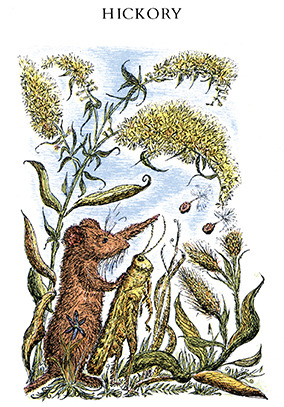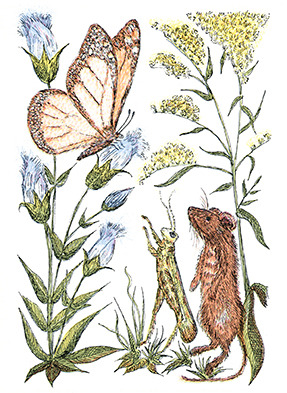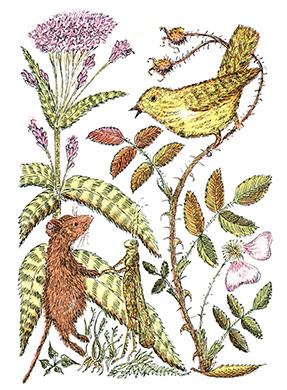Our series profiling the next generation of antiquarian booksellers continues today with Lesley Rains of East End Book Exchange (EEBX) in Pittsburgh:
 How did you get started in rare books?
How did you get started in rare books?
In a lot of ways I feel like I'm still in the process of getting started in this business. But the story has to start somewhere, and for me it was in 2011. I had just moved back to Pittsburgh a few months earlier. I was in the midst of making a dramatic career change, leaving behind a doctoral program in history, with little sense of what I would do next. Around the same time, I noticed that there were hardly any bookstores in the city. It seemed like an opportunity to do something fun and meaningful, to do something that would resonate with the community. I started with a small collection of trade paperbacks, mostly classic and contemporary literature. My first substantive and deliberate introduction to the rare book trade was at the 2012 Colorado Antiquarian Book Seminar (CABS).
When did you open East End Book Exchange and what do you specialize in?
I opened East End Book Exchange in July 2011. EEBX was conceived to be a general interest used bookstore. We feature books in a number of genres, but we emphasize classic, modern, and contemporary literature, poetry, history, and philosophy. I want our shop to appeal as much to the avid reader as to the avid collector.
I know that East End began as a "pop-up bookstore" - could you define that term and tell us some more about that phase of your existence?
A "pop-up bookstore" or business, is a nomadic business that opens in a location
temporarily - a day, a month, several months, then closes and reappears at another location at a later date. It's not unlike booksellers who follow the book fair circuit, except instead of selling at fairs, I was setting up the shop at coffee shops and art galleries around Pittsburgh. After three months of "popping up", I settled into a bookstall at the Pittsburgh Public Market, a weekend indoor vendor market. It's a permanent market, so I didn't have to schlep books in and out every weekend. The bookstall was in operation from October 2011 - October 2012 and I regard it as a self-made internship in bookselling and running my own business. It was a low-financial risk way of gaining experience in the bookselling business. I learned so much about building and managing an inventory and maintaining a budget (or attempting to). During this time we also developed a bit of a following, so when we moved to a storefront, we had an established audience and did not have to start from square one.
But you've recently opened a brick-and-mortar shop, right? How's that going? Do you prefer having a stationary shop?
Yes, the response to the bookstall had been so positive, coupled with a common lament about the dearth of bookshops in Pittsburgh, that in November 2012, we moved to a storefront in the city's Bloomfield neighborhood (which, together with a number of other neighborhoods comprises the city's East End, hence the name). It has been going really well so far. The response from the community, and the local literary community in particular, has been universally positive. The shop has its slow days, to be sure, but there have been plenty of very good days as well. Nothing offends me more as when someone states that they don't believe another bricks-and-mortar bookstore could survive in Pittsburgh. There are so many good readers and booklovers in our town. This isn't to say that the success of a bookstore is a given, but I do believe that a wellcurated bookshop that engages its community has to have more than a fighting chance.
I do prefer having a stationary shop. It has been the most fun growing our inventory and cultivating our identity as a bookshop. We moved from an 80 square foot stall to a 1600 sq. ft. shop (and we opened within three weeks of that move), so we had to get big quickly. It's been a rewarding challenge balancing the need for more books while staying true to our identity as a bookshop. I enjoy the hustle and bustle that comes with running an open shop. I like creating the space, setting the hours, and working with local writers and artists to host public readings. Being a fixed place has allowed us to become more of a community bookstore. In addition to the hosting literary events, we also host local artists for monthly (or so) art shows and we work with a local vintage furniture dealer to outfit the shop with comfortable and attractive furniture. Works by local authors, as well as the art and furniture, are all sold on consignment, so it gives people a lot of different reasons to come to our shop, and ultimately buy books. Retail businesses have to be multifaceted, but never to the point where the furniture and art crowds out the books. I like managing all of these dimensions of our shop in the service of bookselling. To put all of this another way, I like being my own boss and exhilarating/terrifying/just plain fun roller-coaster ride that comes with that.
What do you love about the book trade?
I love how this business is so incessantly stimulating. Whether book-scouting and the sense being on a treasure hunt, or the writing catalogue descriptions and crafting narratives, there is rarely a mundane moment. There is always something to learn, always ways to improve. I have also found that I have been able to utilize a lot of the research, writing, and analytical thinking skills that I developed while in grad school, which is satisfying and helps me to feel like less of a novice.
The sense of community among booksellers is astonishing and deeply moving.
Everyone is so incredibly helpful and kind. Living in Pittsburgh, I've been fortunate to get to know two mentor-friends: John Schulman of Caliban Books and Luke Lozier of Bibliopolis, as well as assorted local writers, who have been crucial to the growth of EEBX. I can state emphatically that EEBX would not be where it is without John and Luke. Luke, in fact, was the one who told me about CABS and encouraged me to attend. CABS 2012 blew me away. David Anthem and Gabe Konrad (two recent BYTs) thoroughly and colorfully described the experience. I knew going into the week that I was going to learn a lot about books; I had no idea that I was going to make lifelong friendships. I'm still in awe of that week and the people that I met.
Favorite rare book (or ephemera) that you've handled?
Two items come to mind. First is the Buckeye Cookery and Practical Housekeeping (Buckeye Publishing Company: 1877). I found it at an estate sale and assumed it was just another old cookbook, but I like cookbooks, so I picked it up. When I got researching it, I found it had a much richer history, namely that it is one of the original church-lady cookbooks. It was such a sensation when it was published that the second edition includes recipes submitted by Lucy Webb Hayes, then the First Lady of the United States. The second is Fontainebleau: En Relief par les Anaglphyes, which contains a pair of 3D glasses from 1941. Both of these books are memorable for the work that went into figuring out what they were.
What do you personally collect?
I don't personally collect, although down the road I would like to. For now, all of my collecting time, energy, and money are focused on the needs of the shop, my customers, and clients.
Thoughts on the present state and/or future of the rare book trade?
I am really excited about the current state of the rare book trade. There are a lot of booksellers meeting the challenges of bookselling head on and doing really interesting and exciting work. At CABS I met Adam Davis of Division Leap and Heather O'Donnell of Honey and Wax Books, both of whom who have successfully created niches for themselves in the rare book trade and are also finding new audiences in their larger communities. I think that going forward, new booksellers will have to pursue both of those avenues. While I rely heavily on social media to promote the shop, I know that it is also necessary to study the book trade's history and traditions, issue catalogues, and attend fairs. All should be utilized in order to create new booksellers and new book collectors.
Any upcoming fairs or catalogues?
I just completed
my first short list and I am working on the follow-up. I don't have any fairs planned for this year, but my goal to attend the Ann Arbor Book Fair and other regional fairs next year. I am also working on my IOBA membership.


















